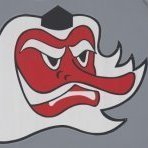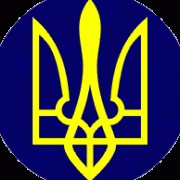Leaderboard
Popular Content
Showing content with the highest reputation on 07/02/2020 in all areas
-
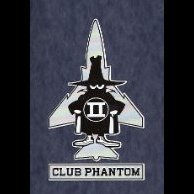
Iranian F-4D 3-6712, 71st TFS, '' DONE''.......
Renegade and 9 others reacted to Daniel Leduc for a topic
Thanks to members help, I was able to tone down my flat finish by spraying TS-80 Tamiya Flat clear coat and planning to add a little sheene with an old T-shirt and wool...... I know it's kind of hard to see the difference but trust me, it's way better than it was.... Was done with the paint, and time for the metal part.... and tape......lol. Running out of Model Master Magnesium metalizer, had to improvised with other finish... And it end up very close.... Getting closer to the finish line for this one....Yeah. And few touch-up on accessories. Will try to finnish it by next week and show it in RFI soon..... Hope you still like it and have fun.. Dan.10 points -
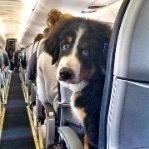
HH-60G Pavehawk Kitty Hawk 1/35 DONE!!
Renegade and 8 others reacted to Pete Fleischmann for a topic
Thank you all for the kind words! So many great modelers here- great friends as well. heres some more. Really; it’s not that bad to do- and oddly relaxing. Who knew? Started on the opposite side of the tail, and as before, moving forward towards the cabin, I find this side a little easier as I am left handed. cheers Pete9 points -
I apologize for jumping around not really getting into the meat of the build. I'm still waiting for the cockpit paint and rivet tools to arrive so I've just been doing small jobs not requiring paint. I've spent some time looking at the Brengun detail set and have specifically highlighted the non-cockpit items so that I don't overlook anything. The spring end of the landing gear actuation arm has no attachment point... it's just floating in space. You can also see how I've scrubbed the paint off the wheel hubs and added the PE bits to them. Brengun supplies a PE attachment point. A small but nice touch and Brengun has thoughtfully added an attachment pin to the part so connection is more positive. Brengun also offers a replacement for the oil cooler exit flap. I was especially proud of my efforts to match the curvature of the kit part... .sometimes this kind of thing gives me trouble. The interior side of the flap has some nice detail. But you really aren't going to see that detail unless you show the flap fully open. And if you do that, you'd be given a view into where the oil cooler assembly is supposed to be. But there is nothing to show. So... unless I want to add an oil cooler, it will be easier not to use the enhanced flap and just use the kit parts showing the flap closed. This PE part is not an addition but just a convenient way to cover up some ejector pin marks. Again, a thoughtful addition to the Brengun set. I punched a piece of brass sheet to create some more detail on the drop tank. I got a set of brass 20mm cannon barrels from a company called RB Models. I don't think it is related to Radu's company, RB Productions. And finally, another photo to show some of the additional staining I've put on the tires.7 points
-
I’m dubbing this the “lets get the build mojo back” build, and throwing in everything but the kitchen sink to really make the project shine. Wingnut’s Fokker D.VII, it’ll be built as an early-build airframe. *July 7th update - this is now a double build, scroll down a few posts for the update* Aftermarket goodies to be used: Aviattic lozenge decal sets for the wings and fuselage Aviattic wood grain decal (cockpit floor) Aviattic Fokker seat Proper Plane Niendorf propeller Rexx early Fokker exhaust pipes Gaspatch extended-handle Spandau guns RB Productions photo-etch radiator face Barracuda intake manifold for the mercedes engine I’ve glued the wing halves together and need to address a slightly short-shot trailing edge on the top half of the upper wing - apparently this is somewhat common with the recent D.VII reboxings. This shouldn’t take more than an hour or two with some putty and careful sanding. More to come!6 points
-
I've been trying to get my head around what happens at the aft underside end with the arrestor hook (deck landing anybody?? ). My dilemma hasn't been helped by the fact that I don't appear to have the hook itself, it's gone AWOL at some point. This is John Wolstenholme's take on it: which helped a lot in my understanding. So I'll need to carve a hook out of resin and I've finally bitten the bullet and ordered the Flightpath set, most of which won't be used but the arrestor arm will along with the ladder. So I cut out the space for the hook stowage: and fettled the housing, most definitely the least satisfactory fitting part of the whole kit. More botching work due.....6 points
-

1/32 Tiger Moth from Special Hobby?
Rick Griewski and 5 others reacted to Trak-Tor for a topic
www.facebook.com/specialhobby Juraj6 points -
Roden 1/32 Fokker Dr.I 477/17
Troy Molitor and 5 others reacted to olgerd83 for a topic
small update - put masks to paint white base for national markings upper wing after removing masks, even though that upper wing should be red, I decided to paint it in a same way, as it was more than 100 years ago. Red colour applied on top of white one, that should give me same effect as on real prototype lower wing - also painted in red tail and other parts thanks for watching6 points -
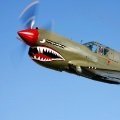
Finished! HPH Mig-15 Korean War
Daniel Leduc and 5 others reacted to Padubon for a topic
Thank you guys for the compliments. I wish I could answer to each of you, but I am up to my neck at work and by the time I get home I am running on fumes. I managed to get rid of Some annoying seams in the intake and wing root area: Also, I did a gloss black coat on the bottom, since the scheme I am doing has a camouflaged top and NM in the bottom. Hopefully, something like this: So far: Again, thank you guys!6 points -

SH Tempest Mk V "Kicked Up A Notch". January 14/21 New eBook!
Sakai and 5 others reacted to chuck540z3 for a topic
July 1, 2020 Happy Canada Day! Not that happy these days? Either am I, but we all truck on, don’t we? Steps 13 to 16 on Page 6 of the instructions are all a blur of assembling the resin seat, adding HGW fabric seatbelts and getting the entire cockpit assembled into one unit before installing it into the front fuselage halves. Here are Steps 13-15: Before I did anything, however, I dry fit the resin seat to the cockpit cage, since seat supports I59 and I71 have variable angles, so it’s better to glue them to the seat installed than after the fact. I found this fit to be a struggle, since the lower seat support I79 didn’t fit the seat very well. After many dry fit attempts, I wound up gluing the seat from the bottom, despite the poor fit. Despite this, it looks OK. But you can see that the seat was glued a bit higher than the tabs on the sides, exposing them slightly on the bottom. I then painted and detailed the seat according to a few references, then added the HGW fabric seatbelts. The top of the seat was painted the same canvas color as the belts, the cord at the top was picked out with brush paint and the seat was heavily worn by dry brushing brown paint over a black base. The seat belts were also heavily worn, by wrinkling them and adding oil stain pastels to add staining. The belts included in my kit were a bit of a mixed bag. While I appreciated the fact that they were already pre-cut, which is a big bonus to other HGW belts I have used, the stitching on them was almost nonexistent. These belts are almost identical to the “Late Spitfire” belts I used on my last build of a NA Harvard, so I already had instructions to compliment the kit ones. I recommend you find these instructions on-line before attempting assembly, which was done entirely with CA glue. I posed the shoulder harnesses a bit high to separate them from the bottom, since they can be pushed upward over the seat back on the real deal. Excuse some of the belt "fuzz" that has since been removed. I recommend you don’t glue the “towel bars”, Parts I67 and I70 into place before you add the belts, because the clearance behind the bars is barely enough to allow the seat belt hardware to pass through. The end of the shoulder harness should be glued to the inside of the upper seat support, I71. Seat glued into place, which is quite a complicated feat with all the other parts of the cockpit cage fit and glued at the same. For wiring, I added only one line from left throttle to the rear. Only one! First of all, there doesn’t seem to be a lot of super obvious electrical and hydraulic lines visible in the references I have, as found on a Spitfire. Most of the cables are tucked underneath. Second, as you will soon see below, you won’t be able to see much of it anyway, so why bother? Step 16 has you add the instrument decals, which I’ve already done. But I also added the Mk II Gyro Gunsight, mounted on Part J21, used on a Mk II Tempest. 2 Holes were drilled at the top of the instrument panel to accept the gunsight mount. For the gunsight, I used the kit resin one, but the glass and overhead shade were sourced from my last Tamiya Spitfire build, because they were more solid than the kit PE and thin acetate glass. Decals for the gunsight were sourced from Barracuda for this same kit. Here’s a bit of a walkaround. The main reason I added the gunsight now, rather than in Step 40 as per the instructions, was to ensure that the gunsight would fit under the windscreen. It does, but barely, so make sure you mount the gunsight at the very front of the mount. The windscreen also fits poorly and isn’t molded very well, so it will need a lot of work to get it installed and glued cleanly. Now a bit of a disappointment. With all the work I did in the cockpit, you can barely see any of it from the top with the fuselage halves together. At least the Spitfire has a big door that is left open to peek inside, but from the top, this is all you see, which is very hard to photograph. Oh well, at least I know it’s all in there, which is why I didn’t bother with a lot of wiring that will never be seen, especially from the top angle. On to Steps 17 to 27, which includes the new Barracuda nose assembly. Cheers, Chuck6 points -
Lemkits 1:32 Arado E.377A with Rheinmetall-Borsig starting trolley( launching dolly) - Heavy glide bomb - Limited edition resin kit -pre-order http://lemkits.com/?post_type=product&p=1625&preview=true At the end of World War II, German aircraft designers realized that in the absence of resources only technological superiority in balance with the simplicity of the materials used could bring a tangible effect. As a result, projects began combining simple materials (wood, steel pipes, etc.) with super modern jet engines and sophisticated control and guidance systems One of the areas in which work was carried out was the creation of heavy motorized-glide bombs of the Mistel series. Arado E.377 is one of the last such projects. In combination with the starting trolley developed by the company Rheinmetall-Borsigand control aircraft of various models, Arado E.377 was to become a deadly weapon for hitting strategic objects and ships of the enemy. Using the speed of reactive systems and surprise, such a weapon could become invulnerable to the air defense of the allies Projects were developed both in the glide version and equipped with jet engines BMW 003, and later a manned version with a tactic of application similar to Japanese kamakaze. The set presented to you shows the Arado E.377A version - with two BMW 003 engines at 1:32 In addition to the pre-order period, the set will be supplemented by two figures of German aviation technicians. The planned time for completion of work on the model and the start of shipping to customers is July 25- August 15, 2020. The model will be shipped by registered mail with track number.5 points
-
Ouch! The leather texture on that bag! Definitely needs an oil paint treatment5 points
-
Hi Paul, I airbrush with Tamiya acrylics a lot and have used them in Iwata airbrushes in the past with great results thinning them 50/50 with either Tamiya or Mr. Color lacquer or Tamiya's X20 thinner. I have always sprayed at around 15 psi for normal airbrushing work and have never found the need to use a higher psi. I do drop the psi to around 5 when spraying mottling and also then the paint to a 25/75 paint to thinner ratio for that kind of work. Ernest5 points
-
HK Models 1/32 B-17G
Scotsman and 4 others reacted to FreightDog for a topic
Small progress, tackled the wooden parts of the interior which isn’t something I’d done before and I wasn’t looking forward to it. I bought some of the lovely looking uschi wooden interior decals, but was put off using them by the precision I reckoned I’d need in cutting trimming and settling them so I tried doing it myself and I’m quite pleased how it turned out. I used the method of tamiya deck tan topped with varnish then burnt sienna and raw umber streaked over the top and worked till I was happy. I’ve left quite a lot on and hopefully it will dry at some e point so I can continue5 points -

AH-1Z Viper, Academy 1/35
albymoore and 3 others reacted to Starfighter for a topic
Here's a quick look at the first and probably only model I have finished in 2020, Academy's excellent 1/35th scale AH-1Z Viper. Probably the best kit I have ever built - excellent surface detail (raised rivets!!), perfect fit. The cockpit is a bit of a letdown detail wise, but nothing that can't be fixed with a bit of effort. Clear parts are a bit of a disappointment as well. The model was published in issue 6/2020 of German magazine ModellFan, so I can just post a minimum of photos at the moment. I am working on a little diorama which I'll show you once it's finished. Just a quick summary of the materials used: Blade fold & blade fold rack by Legend Productions, some PE from Eduard's AH-1W set, Master Model gun, Flying Leathernecks decals, Werner's Wings stencils. MSR/SAIP pod, ground handling wheels, Sidewinder seeker head cover and FMV pods on the tail boom designed & printed by myself. If you have comments, critique or questions, please do not hesitate!4 points -

Some inspiration for the Trump A-26
Rick Griewski and 3 others reacted to Scotsman for a topic
engine start of the Kermit Weeks A-16 , and count the cylinders!!!4 points -
So, I'm still working on this one, and I finally decided to get a Silhouette Portrait 2. Best decision ever!!!! The learning curve is a little steep, but the results are awesome. This should allow me to do "Teggie Ann". So here is a pic of my first efforts with the vinyl masks I cut myself.4 points
-

Some inspiration for the Trump A-26
mark31 and 3 others reacted to thierry laurent for a topic
Well, if you want to be really serious, you need the doped version... ;-)4 points -
Work continues fitting the glass/openings to each other. A tideous fiddly work, working one opening slowly getting the fit right. Micro Kristal Klear is used to glue them in place. The Aircraft Special on the Dragon Rapide arrived today, looking forward to studying it... Cheers: Kent4 points
-
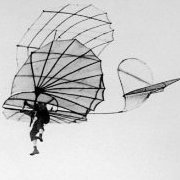
1/32 Fokker Dr.I from Meng
Alain Gadbois and 3 others reacted to RLWP for a topic
Or wait until it was cloudy Richard4 points -
Fokker Dr.I 187/17 photo comments; -The bottom wing "white" cross field is simply unpainted translucent bleached linen. -The upper surface camouflage staining and streaking is translucent. This is why sunlight can be seen shining through both surfaces. -The light blue used on the underside is opaque. -Fokker Dr.I wings were reinforced with (opaque) plywood back to the box spar. This is why sunlight is not shining through the front of the bleached linen cross field or light blue areas. This is also why it is impossible that the light blue on the undersides was also used on the upper surface camouflage as some suggest.4 points
-
Some more interior work... Thanks for looking: Kent4 points
-
The Bendix-Scintilla DF18LN magneto, used on the Corsair (there also is a Bosch magneto that seems less common) is a complicated little bugger. And it is hard to find good pictures or drawings. I did find this though: This comes from a R-2800 "operators Manual" I found at Aircorps Library. This provided alot of good scaling at least for the side view. I also found a magneto on E-bay with some good photos like this: This plus other photos of R-2800's gave me enough to go on. So a ten-times size (10/18 to be sure) layout, and just short of a hundred little plastic parts later I got this: Mounted on the engine, and wired up: I am so glad to be done with that infernal .025 gold painted solder. Next is the propeller governor. I have found some material on Aircorps Library on this too, but there will still be guesswork. After it is installed, I really have to decide what to do next. There are many options, including the back sections of the engine - something I have never done before, and something that requires guesswork as well. Stay tuned!3 points
-

1:32 scale - Siemens-Schuckert D.III
dutik and 2 others reacted to sandbagger for a topic
Hi all, The base colours of red (engine cowl, propeller spinner and forward fuselage) and blue (fuselage and tail unit) have been applied (both darkened slightly). The masks were used to create the fuselage and rudder 'over painted markings, which were then airbrush over to give the impression of being over painted. The fuselage markings will be partially covered by the pilot's personal markings and a decal will be used for the rudder cross. The fuselage markings are strange looking but based of the photograph I posted earlier (evidence of the confusion the orders of March/May 1918 caused). I've 'hair sprayed' an under coat before applying the red, as those areas have metal surfaces that I want to chip slightly. The overall semi-sheen finish and weathering will be applied once the wing decals have been applied. Mike3 points -

1/32 Tiger Moth from Special Hobby?
wunwinglow and 2 others reacted to mozart for a topic
Amazing isn't it, you wait several decades for one to come along, then suddenly it's Tiger Moth-fest!! So glad SW brought their's out first though, but I don't doubt I'll also buy a Special Hobby one as well.3 points -
I'd assumed ICM would eventually do one, given that they have a Bu 131 and a PT-17 to their credit - but Special Hobby is fine.3 points
-
.thumb.jpg.f23b2dc356f90ead35d25aa5e3609a95.jpg)
1/32 Special Hobby Morane-Saulnier type N Ivan Smirnov
AlbertD and 2 others reacted to Dart_Schatten for a topic
Good day, friends! Allow me to present my finished model. It's SH Morane Saulnier type N on Russian service. This is plane of russian WWI ace pilot Ivan Smirnov. That was difficult to built. I've used a lot of scratch build detals in cocpit. Also I used some detales from WnW Sopwith Pup. I used AK paints and some Tamiya. Decals from Begemot. Finished with Gunze oils. Thank you! Regards, Sergey Budyansky.3 points -
1:32 Douglas A-26 Invader from Trumpeter/Hobbyboss?
Daniel Leduc and 2 others reacted to Finn for a topic
In case someone wants to do B-26K here is some useful info: https://www.docdroid.com/oiHN1it/douglas-b-26k-illustrated-parts-breakdown-pdf edit: it could even carry torpedoes: https://www.docdroid.com/oiHN1it/douglas-b-26k-illustrated-parts-breakdown-pdf#page=324 Jari3 points -

1:32 scale - Siemens-Schuckert D.III
Basta and 2 others reacted to sandbagger for a topic
Hi all, The fuselage of this aircraft was coloured blue and was applied over what were the original National markings (fuselage and rudder). However, the markings were still visible under the applied blue colour and therefore need to be represented on the model. The colour profile of this aircraft and others from Jasta 15 appear in several books and the profile artist for the one used does state that the over painted markings are speculative and based on previous aircraft flown in Jasta 15. The following photograph, although of poor quality, shows a large white cross with the black cross at its centre on the fuselage. The rudder seems to show a very faded black cross under the white coloured rudder with the later black cross superimposed. The colour profile has the previous rudder marking as the old style ’Cross Pattée’. However, when the photograph is changed to a negative, the marking, although difficult to see, does appear to be more of a standard cross in shape. Between March and May of 1918, the ’Idflieg’ ordered that the National markings be changed, but initially no dimensions were given and confusion at the various Jasta’s led to a wide variation in the shape of the new cross markings. The older ’Cross Pattée’ marking was used earlier in WW1 and I personally doubt that this underlying marking would have been on an aircraft in 1918, especially when you consider that the first production batch of D.III aircraft was placed in March 1918, the same month the ‘Cross Pattée’ was discontinued. Therefore I've chosen to use the later cross shape as the underlying marking on the rudder, rather than the older ’Cross Pattée’. I'm intending to chip the paintwork on the forward metal panels and engine cowl, so I've applied a base coat of 'Alclad' Duraluminium (ALC-102). Then a coat of cheap hairspray, as I can't get on with chipping fluids, which I find tend to bead up. The figures I chose to use are the pilot and airman from the ‘Aviattic’ - “GötterdÄmmerung” pilot and airman (ATTRES 024) Mike3 points -
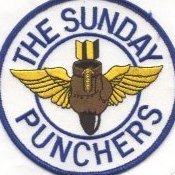
hit a brick wall about Richthofen Fokker dr 425/17....
Rick Griewski and 2 others reacted to petrov27 for a topic
It is speculation based on that the original fabric and aluminum pieces that remain in museums from the crashed 425/17 have been closely examined and found to have a non-standard finish in that none of the typical factory applied dark green streaking or paint is present under the red on these parts as would be expected. This suggests the possibility 425/17 was a special build for von R from Fokker that was predominantly painted red at the factory similar to the later Goering DVII being painted white. An alternative could be that major sections of the aircraft were re-covered with new fabric and aluminum at the squadron or depot level perhaps due to damage and never saw the green factory paint, only red. It would seem maybe a little odd that the top ace of the German air force would be assigned a aircraft that had suffered that level of damage and repair but who knows? Or heck maybe the fabric and metal in the museums are excellent forgeries that have fooled the museums and WW1 Aviation historians for many many years.3 points -

P51 D (early production)
MH Design Scale Models and 2 others reacted to HL-10 for a topic
Revell's all new P51 D is a lovely, straightforward kit with no vices. I added a set of etched seat belts, and the rest was out of the box. Painted with Humbrol enamels. Thanks for looking Angelo.3 points -

The antique BoB Revell Spitfire Mk.I
Daniel Leduc and 2 others reacted to thierry laurent for a topic
Not a lot of time to work on the kit yesterday. I added the missing brake line on the LG legs: And here's the plastic plate I mentioned yesterday. I forgot posting that picture earlier. This also showed that, as I mentioned earlier, all the elements intended to secure the LG legs have been removed to be able to position correctly the resin LG wells. This closed the jack point holes and will be right against the false floor of the cockpit to give rigidity to the fuselage/wing assembly: As you can see I also started working on the radiator... but this will be for a next episode as some elements have yet to be recreated.3 points -
One of the most interesting airplanes for people who like strong weathering. F-4E Phantom II Hellenic Air Force Tamiya 1:32, model made of course straight from the box so it may not be an ideal reproduction of the F-4E HAF. The Tamiya set is probably well known to everyone. In short it's realy good set. Greek planes can be very heavily exploited, which makes them a great material for modelers.2 points
-

1/32 Tiger Moth from Special Hobby?
Rick Griewski and one other reacted to R Palimaka for a topic
Apologies if this is old news, I searched the forums to see if I could find any mention of this. In the June 2020 Newsletter from Special Hobby, this was buried at the bottom of the update: In the pipeline, we also have some CMK sets for the Airfix 1/48 DH-82 Tiger Moth, namely the cockpit correction set, very nicely detailed resin cast engine and a few more to move the levels of detail even higher. All of these is based on the data gathered while preparing our forthcoming 1/32 scale Tiger Moth kit. And we are also working really hard on finishing the 1/32 Westland Whirlwind which should get released sometimes this autumn.2 points -
All, While I have been a member of LSP for a couple years now, I have not completed a 1/32 build until now. Here's is my first submission - a 19 month build version of the HK B-25J glass nose, made up to resemble the original "The Ink Squirts" as based on Okinawa in the summer of 1945. This took somewhere around 500 hours of time to complete. For the most part, this is an OOB build. I did get the correct props, added metal landing gear, Brassin wheels, used Finemolds ABS plastic seat belts (they are very nice!) and used the Profimodeler brass gun barrels. The paints were a mix of things. Most of the interior was done using Vallejo Air paints. This is the first time I've ever used these paints and I have to say they are excellent. The only ones I did not care for were the metallic ones. They were too grainy for my tastes. The exterior of the plane I first coated in Model Air Grey Primer then applied an overall coat of Floquil Old Silver. I then masked off areas and used a couple different Alclad metals over this for panel variations. Aside from the Grey Primer. None of these were applied to cover 100% as I wanted slight variations in the aluminum skin tones (which can be seen in photos of the original aircraft). Glass lights were painted with Tamiya clears (green, red and orange) on the back side of the clear plastic parts that were then glued into place. Some the engine parts were painted with Model Master Metalizers. Weathering was applied by hand (literally, with my fingers) using a mix of Mig Old Aluminum, Black Smoke and Volcanic Ash pigments mixed in with some of Doc O'Briens Grimy Black weathering powder (these powders can be found in railroad modeling catalogs). For the liquid weatherings I used Mig and Model Master washes. My father was stationed on Okinawa at the end of the war (when this plane was there, too). He often commented that the planes were dusty/sandy from the island sand. So my intent on weathering was based on this and what I could see in photos. Not real dirty/grimy but somewhat dusty-dirty. I have not installed the U antenna on the front glass yet. This did not come with the kit and was purchased from Profimodeler also. Decals were from Kits-World and are very nice! They were applied directly over the Old Silver/Alclad paints and sealed with a 50/50 mix of Polly S Clear Satin and Flat Clear (this seemed to approximate the sheen of the aluminum best to my eye). For the rivet counters out there - Yes, there are some errors. But it's a model. I enjoy building them and don't worry too much about, well, the rivets. The kit cockpit glass is wrong for this particular aircraft. If you search for images of this plane, you will note that the left front of the cockpit has metal framing around the image painted on the glass (the pilot?). These frames are not molded into the kit glass. If anyone has any questions about how I did something on this build, please feel free to contact me. Apologies about the fancy backgrounds in the images. My photo studio was set up to photograph a model (as in woman) and I didn't have time to change it over to a light table (which this model, being as big as it is, probably would not fit on anyway! LOL!). Hope you all enjoy and thanks for taking a look! -Ro2 points
-
SH Tempest Mk V "Kicked Up A Notch". January 14/21 New eBook!
scvrobeson and one other reacted to Chek for a topic
The Hurricane and Tempest did not have side access doors. Your confusion may come from some modellers depicting the Hurricane's stbd side detachable service panel off to let more light into the area, but it was never for pilot access. The Tempest and late Typhoon's similarly were canopy access only.2 points -

1/32 Tiger Moth from Special Hobby?
MikeC and one other reacted to Dennis7423 for a topic
And I wonder if we'll see some other fine trainers from them as well, like an injection-molded PT-19? Or PT-22? One can hope... What a time to be alive. - Dennis S. Thornton, CO USA2 points -
It is, even I know it.2 points
-

EE Lightning - Echelon vacuform
thierry laurent and one other reacted to quang for a topic
If you say so M.2 points -

1/32 Tiger Moth from Special Hobby?
wunwinglow and one other reacted to thierry laurent for a topic
Who said ICM will not bring one...? Remember the Stearman... Wait and see! As you wrote, I was rather seeing that plane coming from them. However, if only SH is bringing a new plastic one, this is quite sufficient to me when I'm seeing such appetizers...2 points -
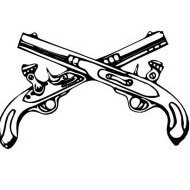
1/18th Merit SBD-2 "2106" at Midway
scvrobeson and one other reacted to REJ for a topic
Finally got everything taped and the interior color shot. Now if I could get those placards and the exterior colors....come on postal service!2 points -
And now for something completely different! Revell's 1/72nd scale Shackleton MR3 is a lovely kit. Very well engineered. No fit problems at all! Surface detail is very fine and nicely done. Has the option of a Phase 2 or 3 variant, with the Viper jet engines. I don't usually do 72nd, but this kit was an absolute joy to build. Painted with Tamiya acrylics. Thanks for looking Angelo.2 points
-
Don't get the Eduard 109. Unless you want to refer to it as Quasimodo.... or Igor:2 points
-
That underside is really taking shape, Ernest. On my 109's I have been trying to master oil streaking coming back from the lower cowling. But helpful pics are so hard t find. This Ungarnische 109 hints at it: While this Emil which has the misfortune to be wearing roundels may be a bit too extreme...perhaps a Luftwaffe ground crew would wipe away some streaking occasionally : But unfortunately my skills have yet to produce a good outcome. My hands aren't steady enough to paint straight streaks. Keep up the great work!2 points
-
Below are some shots of the bottom of the aircraft that I said I would post today. I have completed the majority of the weathering which includes some general grime, streaking effects running from the leading towards the trailing edge, various oil, coolant and hydraulic stains. I still have to add some powder staining trailing back from the cannons and the bottom will be complete. There are also two photos of the starboard wing showing the early phase of fading. Unfortunately the fading on the RLM 02 does not show up very well in the photos being a fairly light color. Normally, I don't weather Western Front aircraft very much because the operated out of fixed airbases that were paved and had good maintenance facilities. Due to where aircraft of I/JG27 were based during the battle I want to show the aircraft in a moderately weathered condition as it probably flew a great deal of its sorties from grass strips with poor base facilities. I/JG27 was based near Plumetot, which incidentally is located a few kilometers inland from Juno Beach not far from what was known as the Hillman Strongpoint which played a pivotal role on D-Day in preventing the capture of Caen. My useless trivia aside, the airfield was basically a grass field and had no hangers or maintenance areas so the aircraft operating out of it were probably looking a bit dirty and worn by the late August timeframe. Ernest Overall shot of most of the bottom of the 109. A closer view, the weathering is more evident. Macro shot showing some oil and other fluid staining. Another macro, you can just make out some of the streaking on the wing chord. Close up of one of the wheel wells with various fluid stains and general grime. Starboard wing showing initial fading effects. Actually they don't look bad at this point and I may just leave the fading as it is.2 points
-
One of the great things about this website/forum is the huge number of very experienced and well-read people who generously share their learnings here. Having spent all evening and a chunk of today carefully re-reading Ryan Toews tweak list for this kit and the epic Ryan/Sean collaboration on a 42/43 vintage Nakajima A6M2, I now have 15 pages of to-do notes for this build. And some AM photo-etch and resin wheels on the way, as well as some more scratchbuilding stuff that I didn't have and decided was essential. So much for OOB! I'm even more excited about this project now.2 points
-
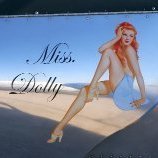
Interesting Spitfires
Rick Griewski and one other reacted to LSP_Ron for a topic
Using a colorized photo as reference..... holds no water. Is the lady really in red? or is it blue,? or rose, or light blue? Great photo, real color???? we know it's not2 points -
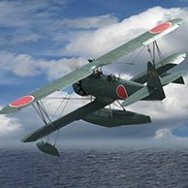
Trumpeter F-105G (Done)
Daniel Leduc and one other reacted to denders for a topic
Well, everything is in the cockpit tub and a first fit in the fuselage. Looks like it needs some work. There is a piece at the top of the rear instrument panel that will need some work. Either filing in the plastic fuselage halves, or removal and relocation a bit lower, or perhaps AWOL . There are some other locations that need some adapting in the fuselage sections. And of course, there's a whole lot of other items that have to fit before final closing up. So far, I like what I've got.2 points -
Another detail I've added to the Shiden Kai. The kit gives you boarding ladders for each side of the aircraft. Like the Fw 190D-9, the boarding ladder is retractable. The kit shows the ladder in the retracted position, laying flush with the bottom of the wing. If you want to mount the boarding ladder, the kit requires you to open up the appropriate hole. I am going to have the port ladder extended. But instead of just drilling the hole, I thought it's more realistic to open the space that the ladder would occupy. A piece of sheet styrene was used to block off the opening and a small hole was drilled into that to accept the ladder. I dry fit the fuselage to make sure the piece of styrene wasn't interfering with the fit. Another small detail that hopefully adds to the overall model.2 points
-
Go with the pictures, not the profiles Richard MORE. Let me refine that. You and the profile makers are doing the same thing, starting with those pictures and making an interpretation. Now, it may be that the profile makers have access to better copies of the pictures (not prints of prints of prints) on which the serial numbers can be made out You are choosing to do your own research, the same as the profile drawers - so it's the pictures for you. Maybe you'll reach the same conclusion as the profile drawers2 points
-
So after having the kit smudged by Tibetan Monks and getting my attitude straightened out a bit with the CF 188...I have decided to try revisiting the cursed Kinetic Kit. I first dealt with the splitting seams which (knock on wood) have, as yet not re-appeared. Then since I had a dozen sheets of foil that I had originally planned on using on a HK B-17 (which ultimately received Alclad and was the better for it) or building an aluminum canoe...I figure I'll stick it all over this kit and kill two birds with one stone. The saga continues; Thanks for looking2 points


.thumb.jpg.cd22b958c9e88a898a21e18b862c523e.jpg)

